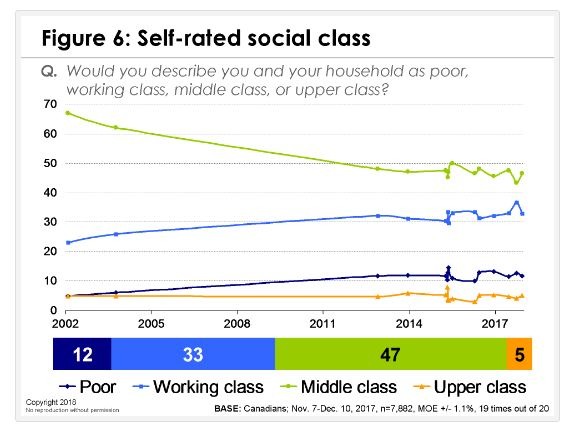The thinking of Comrade F. Dobler from the early 20th century remains relevant and even prescient: those who need open access to information may be those who are fundamentally excluded from public libraries.

Class matters
Social class is the most significant single determinant of public library use and non-use. A recent study in the U.K. found that 46 per cent of adults had used a public library in the previous twelve months. In 2016, fifty three percent of middle class people visited the library, which was down from 58 percent in 2011. During the same time period, 36 percent of working class people used the library, down from 45 percent in 2011. Put another way, 64 percent of U.K. working class adults do not belong to the public library. The library is not seen as relevant to their lives or able to meet their needs. The traditional public library focuses on the needs of the middle class. Transformations in strategy, structures, systems and organizational culture are required to develop community-led libraries which are socially inclusive and able to meet the needs of the whole community. The needs-based library prioritizes those with the greatest needs.
It is interesting to contrast these U.K. figures with a recent Ekos-Canadian Press survey which indicates the number of people who self identify as working class sits at 33 percent, while 47 percent place themselves in the middle class. This is the lowest percentage of self identified middle class people since 2002—at the outset of the century about 70 percent of Canadians defined themselves in middle class terms. At the same time, the incidence of those in the working class has nearly doubled. These self-identifications aren’t just about people’s bank balances. It’s also about how they see their physical well being, their emotional connections and general sense of the quality of their lives. The assumption is that if people see themselves falling out of the middle class then we’re going to have a less happy, less healthy society at some point in the future. In other words, to be middle class is to be a success, but to be working class is to be a failure.

Until these recent developments there was a widespread assumption that class is particularly unimportant in Canada and the United States. This is because only a minority of the population identified themselves as working class. The vast majority claimed to be middle class. It is important to recognize that while people may not refer to themselves as working class, class is still significant for them. The issue is what class do they identify with. Why is it so important to so many people to be able to claim that they are middle class? And what does the concept of middle class mean to them? The fact that individuals refuse one class designation in favour of another or refuse to accept that they belong to any social class can be interpreted as an indication of the importance of class. So when we hear statements such as ‘We are all middle class’ or, even more ridiculous, “We are all classless,” we know that social class is alive and well both as a concept and a reality.
Certain class designations may carry such negative connotations that people seek to avoid them. Even in the class bound U.K. working class women often deny that they are working class because of the social stigma the label carries. In Canada and the United States the designation middle class carries such positive connotations that almost everyone wishes to claim the label for themselves. It is also possible that membership in a class may carry such privilege that those who benefit from it may wish to mask its relevance.
In It’s a working man’s town (a study of male working class culture in Thunder Bay, Ontario), Thomas Dunk takes the stance of a critical realist. While recognizing that language and culture shape and filter human perceptions of external reality, critical realism holds that there is a reality quite different from its discursive representation and that some descriptions and explanations come closer to capturing this reality than others. Subjective or emic social categories are important but should not necessarily be taken as reality itself. Their accuracy and social function needs to be studied.
There has been a similar growth in interest in social class in America as witnessed by best-selling titles such as Hillbilly Elegy: A memoir of a family and culture in crisis by J.D. Vance, White Trash: The 400 year untold story of class in America by Nancy Isenberg, and White Working Class: Overcoming class cluelessness in America by Joan Williams. In this latter book, Williams compares the attitudes and values of white and black workers with those of professionals and managers. This research was carried out by Michele Lamont in The dignity of working men: Morality and the boundaries of race, class and immigration. There is a striking similarity between white and black workers whose shared values include being responsible, protecting, personal integrity and straightforwardness / sincerity. The professionals and managers have a different set of values which include self-actualization, flexibility / team orientation and conflict avoidance. This demonstrates that working class people have more in common with each other (regardless of their racial background) than with the middle class. Yet the majority of public library staff and users are middle class. The collections, programs and services of the public library reflect middle class values and attitudes. This might help to explain why the majority of working class people do not use public libraries.
Written by John Pateman
John Pateman is the CEO of the Thunder Bay Public Library. He is also the author of the Open for All? column in Open Shelf.
This Post Has One Comment
Comments are closed.

[…] matters” because this complements my last column, “Class matters.” As I wrote this past May, social class is the most significant single determinant of public library use and non-use. However, class is not the only factor that influences the relationships that individuals and […]